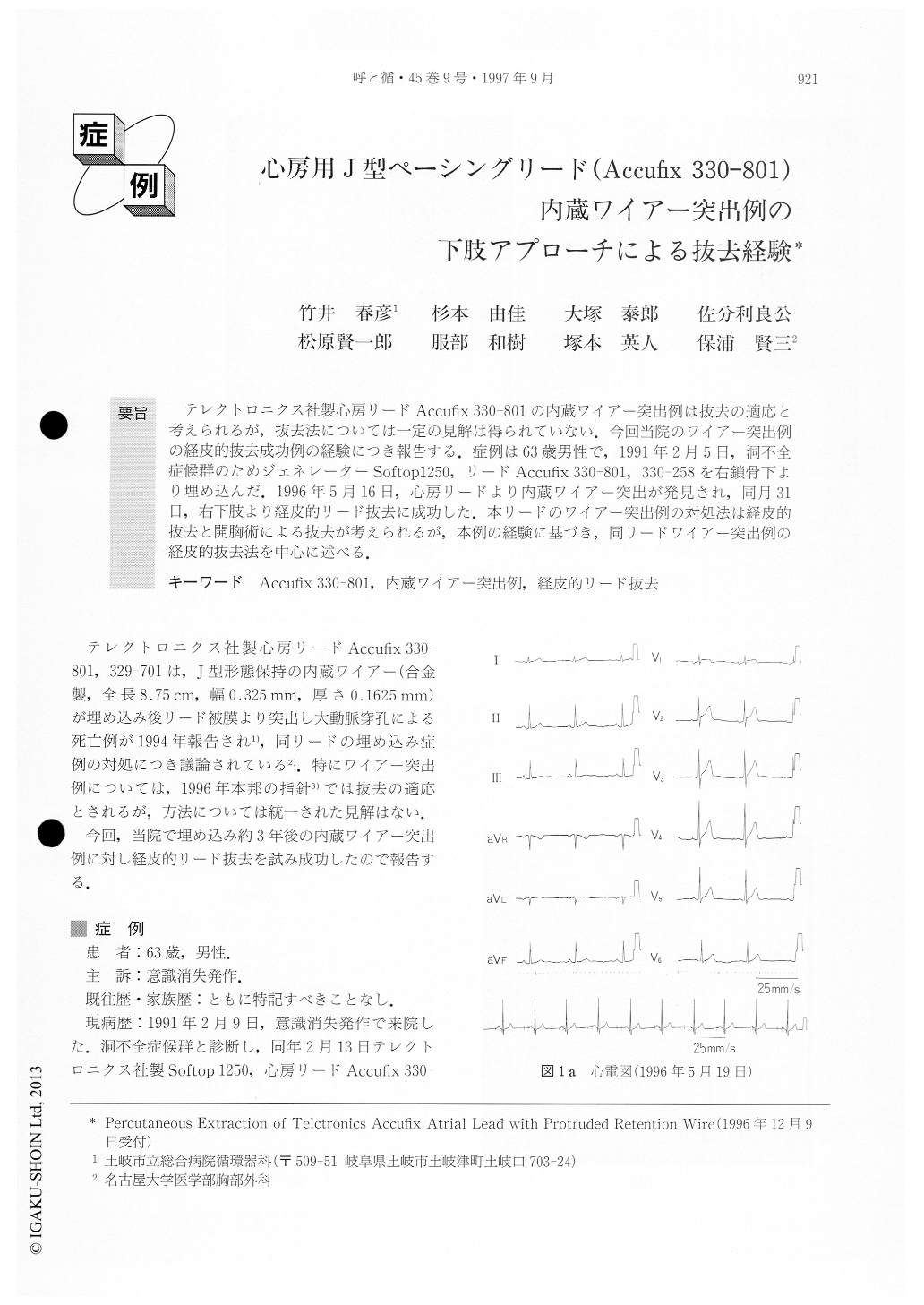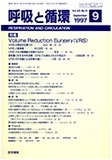Japanese
English
- 有料閲覧
- Abstract 文献概要
- 1ページ目 Look Inside
テレクトロニクス社製心房リードAccufix 330-801の内蔵ワイアー突出例は抜去の適応と考えられるが,抜去法については一定の見解は得られていない.今回当院のワイアー突出例の経皮的抜去成功例の経験につき報告する.症例は63歳男性で,1991年2月5日,洞不全症候群のためジェネレーターSoftop1250,リードAccufix 330-801,330-258を右鎖骨下より埋め込んだ.1996年5月16日,心房リードより内蔵ワイアー突出が発見され,同月31日,右下肢より経皮的リード抜去に成功した.本リードのワイアー突出例の対処法は経皮的抜去と開胸術による抜去が考えられるが,本例の経験に基づき,同リードワイアー突出例の経皮的抜去法を中心に述べる.
We report a case with successful extraction of a Telectronics Accufix atrial lead protruding retention wire, using a femoral approach.
A 63 year-old-male diagnosed as having sick sinus syndrome required the implantation of a pacemaker (generator; Softop 1250, atrial lead; Accufix 330-801, ventricular lead; 330-258) in our instiute on February 13, 1991. Although he was asymptomatic, cinefluoro-scopy revealed a protruding “J” wire on May 16, 1996. He was readmitted to our hospital for the purpose of percutaneous removal of the atrial lead. Under general anesthesia this procedure was carried out, using a right femoral approach, at our catheterization laboratory on May 21. After the exposure of the generator and both leads, a 27 Fr PCPS cannula was inserted surgically from the right femoral vein until it reached the level of the inferior vena cava. Crossing the atrial lead by a guide wire (“Terumo Radifocus” 0.032inch, 3m, J type), both sides of the guide wire were conducted ex-corpor-ally by a basket snare (Cook, 5F). As soon as the looped guide wire locked onto the atrial lead using an 8Fr Judkins right (3.5cm) catheter through the cannula, its screw was detached. After the atrial lead was pulled back into the PCPS cannula, the atrial lead and the PCPS cannula were withdrawn simultaneously. Post-procedural echocardiography revealed no pericardial effusion. 2 weeks later, reimplantation of the DDDR was carried out uneventfully through a left subclavicular approach.

Copyright © 1997, Igaku-Shoin Ltd. All rights reserved.


